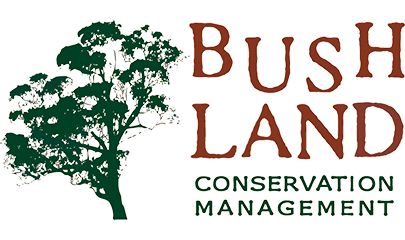Regeneration Plan
Walk through the proposed project area and identify areas of the bushland that are in excellent to good condition, which means there is an intact native canopy and high percentage of mid story and ground covers. It is always good to work from the good bush out. This means you have identified the interface of the good bush and were the weeds are beginning to encroach into the areas observed as good to excellent bush.
The next step is to identify the weed and native species. With identifying the different weed species you can plan the staged removal. The time of year that the weed species flower and seed is a factor that is taken into consideration, as it is important to remove or reduce the weed species before the seed become viable. This will reduce the amount of seeds being deposited into the soil seed bank. We consider the growth rate of each weed species, if it is a fast growing species which out competes or smoothers native recruitment or remanent vegetation we will target the removal of these weed species. Then allow time to systemically remove the slower growing weed species.
It is important to remember that we have to remove plant matter that is Restricted and which is now listed as categories 1 through to 5 under the Queensland Biosecurity Act. We also must contain locally significant matter within our region. (Formally Class weeds and environmental weeds.)
If a revegetation is required walk through the proposed area of the project and work out which ecosystem is being rehabilitated. Wether for example it is rainforest, coastal heath or dunal areas. This will assist with the endemic species required for the project areas. It is generally best to use a majority of Pioneer species (fast growing) in the initial revegetation and infill with the slower growing species secondary succession. On our website we have included recommended plant lists for different ecosystems and areas of frost. We have also included a how to do guide for a revegetation in coastal environment and all other areas. If a revegetation is required this will require a large amount of the time and resources to maintain. Therefore is could be better to undertake removal of the priority weed species, before undertaking the revegetation.
On occasions you can use the weeds to your advantage using the canopy of the weed trees to interlock with the native structure. Once you slowly remove the weed species this will allow time for the native canopy species to spread into the desired areas and allow the next level of stratum to increase in size. This allows time to treat the next generation of emerging seed from the soil seed bank. As weed species generally are prolific in producing seed. Additionally removing sections of grass/annuals etc along the edge of the interface of the good bush, the expanding native ground covers and saplings will assist with reduction of weed species and recruitment, by suppressing and out competing weeds.
The most important factor to all weed removal or revegetation work is the follow up, which is required to encourage the native recruitment and to prevent weed species from seeding. This will reduce the weed seed located in the soil seed bank, thus reducing work load into the future.
